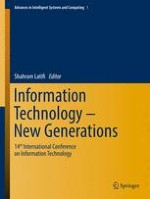2018 | OriginalPaper | Chapter
73. Requirement Verification in SOA Models Based on Interorganizational WorkFlow Nets and Linear Logic
Authors : Kênia Santos de Oliveira, Stéphane Julia, Vinícius Ferreira de Oliveira
Published in: Information Technology - New Generations
Publisher: Springer International Publishing
Activate our intelligent search to find suitable subject content or patents.
Select sections of text to find matching patents with Artificial Intelligence. powered by
Select sections of text to find additional relevant content using AI-assisted search. powered by
